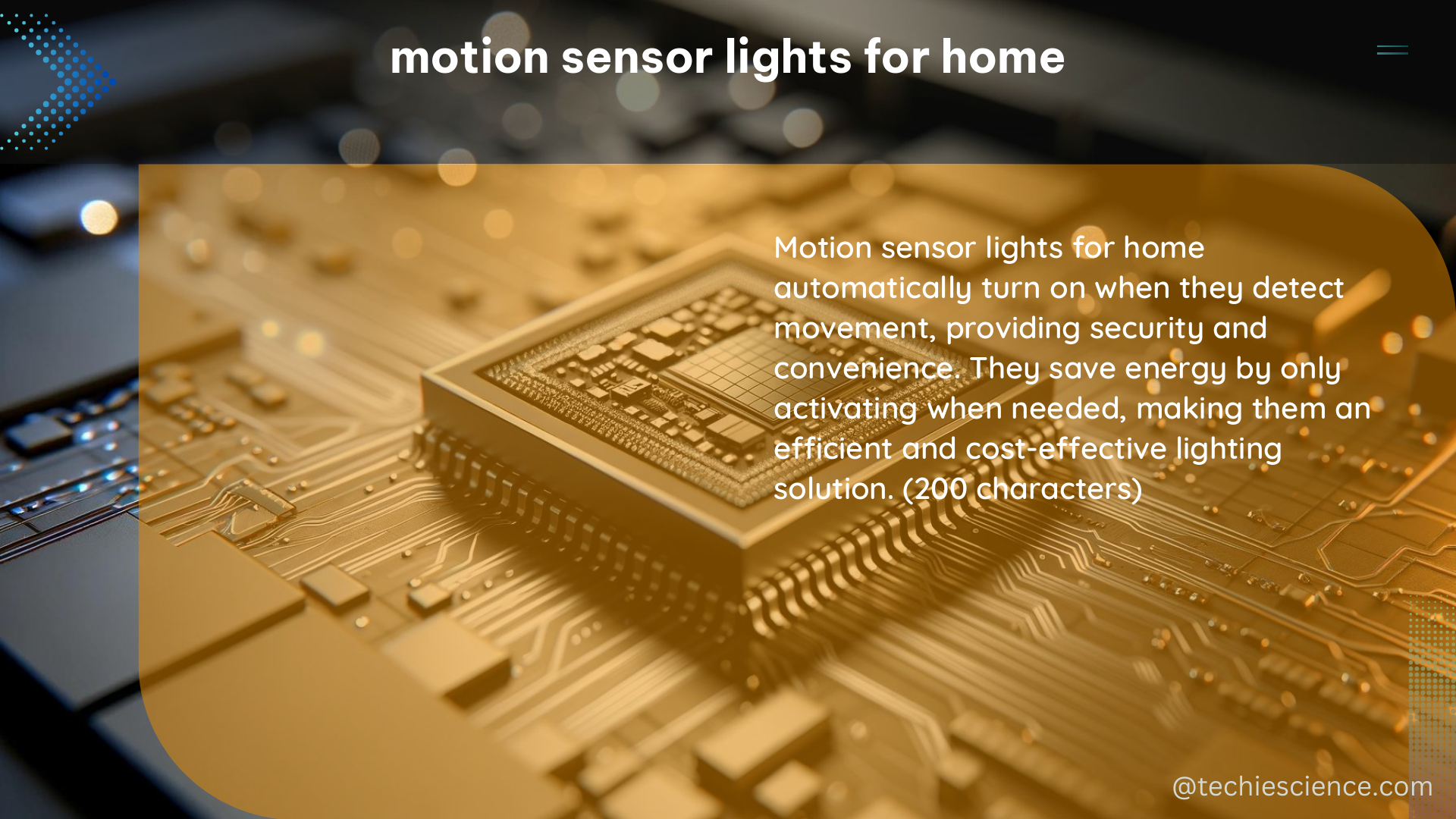Motion sensor lights have become increasingly popular in homes due to their energy efficiency, convenience, and enhanced security features. These lights use advanced sensors to detect movement and automatically turn on, providing illumination when and where it’s needed. In this comprehensive guide, we’ll delve into the technical specifications, installation tips, and practical considerations for incorporating motion sensor lights into your home.
Understanding Motion Sensor Light Specifications
Detection Range
The detection range of motion sensor lights is a crucial factor to consider. Typically, these lights have a detection range of 9-25 feet, although some advanced models can detect motion up to 70 feet away. The detection range can vary depending on the sensor type, placement, and environmental factors.
Detection Angle
The detection angle of motion sensor lights can range from 100 to 360 degrees, allowing for a wide coverage area. This parameter determines the sensor’s field of view and the area it can effectively monitor for motion.
Light Output
Motion sensor lights for homes can have a light output ranging from 300 to 1,500 lumens, providing ample illumination for various indoor and outdoor applications. The light output is influenced by factors such as the bulb type, wattage, and reflector design.
Battery Life
For battery-powered motion sensor lights, the battery life can range from 6 months to 2 years, depending on the model and usage patterns. Factors like sensor sensitivity, timer settings, and LED efficiency can significantly impact the battery lifespan.
Response Time
Motion sensor lights typically have a response time of 0.1 to 1 second, meaning they turn on almost instantly when motion is detected. This rapid response time ensures that the lights provide immediate illumination when needed.
Lux Level
Some motion sensor lights offer adjustable lux levels, which determine the amount of ambient light required to trigger the sensor. This feature allows users to customize the sensitivity based on the specific lighting conditions in their home, ranging from 10 to 1,000 lux.
Motion Sensitivity
Motion sensor lights can have adjustable sensitivity settings, ranging from low to high. This parameter determines the amount of motion required to activate the sensor, allowing users to fine-tune the system to their preferences and reduce false triggers.
Timer Settings
Motion sensor lights often include adjustable timer settings, which determine how long the lights remain on after motion is detected. This feature can range from 1 minute to 30 minutes, providing flexibility in energy savings and convenience.
Technical Specifications of Motion Sensor Lights

Sensor Type
Motion sensor lights for homes typically use passive infrared (PIR) sensors, which detect changes in infrared radiation caused by the movement of warm objects, such as people or animals.
Wattage
The wattage of motion sensor lights can range from 10 to 50 watts, depending on the bulb type and the desired light output.
Voltage
Motion sensor lights for homes typically require a voltage of 110-240 volts, depending on the regional electrical standards.
Lamp Type
Motion sensor lights can utilize various lamp types, including LED, CFL, or incandescent bulbs, each with its own advantages in terms of energy efficiency, lifespan, and light quality.
Mounting Options
Motion sensor lights can be mounted on walls, ceilings, or outdoor fixtures, providing flexibility in installation and placement to suit the specific needs of your home.
DIY Tips for Installing and Using Motion Sensor Lights
Choose the Right Location
When installing motion sensor lights, it’s essential to choose areas with high foot traffic, such as entryways, hallways, and stairwells, to maximize their effectiveness and convenience.
Adjust the Settings
Properly adjusting the sensitivity, lux level, and timer settings of your motion sensor lights is crucial to ensure they function optimally for your specific needs and environment.
Test the Lights
Before finalizing the installation, it’s recommended to test the motion sensor lights to ensure they are working correctly and responding to motion as expected.
Maintain the Lights
Regular cleaning and maintenance of your motion sensor lights can help maintain their optimal performance and longevity. This may include cleaning the sensor lens, replacing batteries, and checking for any physical damage or obstructions.
By understanding the technical specifications and following these DIY tips, you can effectively incorporate motion sensor lights into your home, enhancing energy efficiency, convenience, and security.
References
- Best Practices for Motion Activated Lights – Home Assistant Community
- Most Efficient Way of Handling Motion Activated Lights: r/homeassistant
- Light Sensors: Units, Uses, and How They Work – enDAQ Blog
- Wearable Motion Sensors to Continuously Measure Real-World Physical Activity: A Review – National Center for Biotechnology Information

The lambdageeks.com Core SME Team is a group of experienced subject matter experts from diverse scientific and technical fields including Physics, Chemistry, Technology,Electronics & Electrical Engineering, Automotive, Mechanical Engineering. Our team collaborates to create high-quality, well-researched articles on a wide range of science and technology topics for the lambdageeks.com website.
All Our Senior SME are having more than 7 Years of experience in the respective fields . They are either Working Industry Professionals or assocaited With different Universities. Refer Our Authors Page to get to know About our Core SMEs.